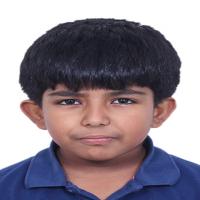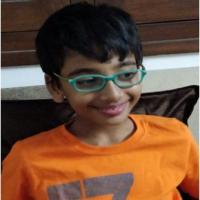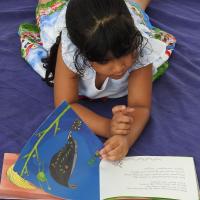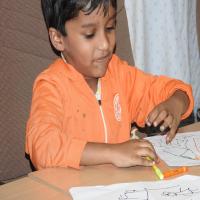

NIAS-EGT programme adopts the following understanding of giftedness:
“Gifted individuals are those who demonstrate outstanding levels of aptitude (defined as an exceptional ability to reason and learn) or competence (documented performance or achievement in top 3% or rarer) in one or more domains. Domains include any structured area of activity with its own symbol system (e.g., mathematics, music, language and/or set of sensory-motor skills e.g., painting, dance, sports).” (NAGC, 2014).
Expanding itself to cater to the diversity of India, the programme acknowledges the need to identify and mentor the gifted and talented individuals from diverse socio-economic backgrounds.
The nomination process for NIAS-EGT General Programme is open for children under 9 years of age, from all socio-economic backgrounds. NIAS-EGT has developed a standardized Behavioral Rating Nomination Scale (BRNS), through which a potentially gifted child can be nominated for the programme. A further important component of NIAS-EGT identification protocol is the case profile/portfolio documentation of gifted children. The children nominated by parents or teachers are profiled in detail. Case profiles are qualitative data which represent longitudinal, developmental and psychological accounts of the aptitude, ability, and potential that children exhibit. The programme has worked on the standardization of the Indian norms for Torrance Test of Creative Thinking (TTCT) and Raven’s Progressive Matrices (RPM).
The identification of students on the basis of Teacher’s observation and understanding becomes the first step in shortlisting the students. This is preceded by a comprehensive Teacher Training Workshop. However, NIAS-EGT uses portfolio and case study data at the next stage. In principle, NIAS does not administer the Psychometric tests for children below 9 years and for children from marginalized background, for identification.
The identification protocol for rural children is a well-developed indigenous tool, designed for the inclusive education in the diverse socio-cultural setup like India. The NIAS- EGT rural identification model identifies the children through teachers who are the primary contact points through training workshops. The team works with the Education department officials at the taluk and village level to obtain the nominations from the teachers. Children can also be nominated by any community member.
The shortlisted students are profiled through observation and in-depth interviews with teachers, parents and community members. The last step of identification is through a workshop where the children are observed by multiple individuals which provides validation of the observations. The residential workshops allow the team to check the motivation and interest of the child in varied topics. Facilitators act as initial mentors guiding them in their respective area of expertise.
Take a look through the picture gallery...
Partial list of students who have participated in the NIAS-EGT programmes. Abbreviated profile snapshots are provided as a guide for potential nominations.

Bairav is deeply interested in Organic Chemistry, Astronomy and Mathematics. He has completed summer school program for High school students on astronomy conducted by MP Birla Institute of Fundamental Research and continues to be mentored on Astronomy/Physics. He has been supported by professor from…
Read More
Avyan has been allocated a learner profile in his school and he has keen interest in Mathematics, Data Analytics, Indian Mythology, Chess, Cricket, table tennis and Badminton. He loves playing all outdoor sports as well as board games – Chess, Monopoly deal, Mastermind, Stratego, Scotland Yard are among…
Read More
Aaditri is interested in reading science and mythology. She has widely read the Mahabharata, Bhagwad Geeta, Bhagwadam and also the Greek mythology. She loves to delve in themes and interconnecting the far ends, for example Bhagwadam with science and politics. She observes and questions the texts and…
Read More
Have you heard of “wake turbulence”? Adhrit is the best person to answer this question. He is a 6 year old self-motivated on a quest to explore and find out. Most of his sentences are questions, and will not be convinced until a logical reply is given or found out. He has shown a keen interest in learning…
Read MoreNIAS - MAIYA PRODIGY FELLOWSHIPS...
Click here to view the Results